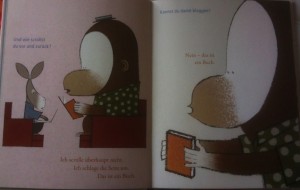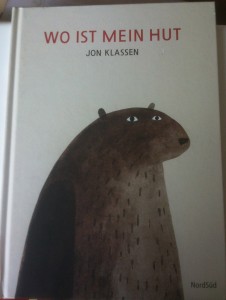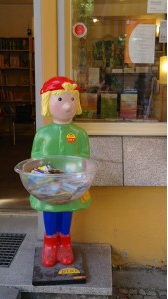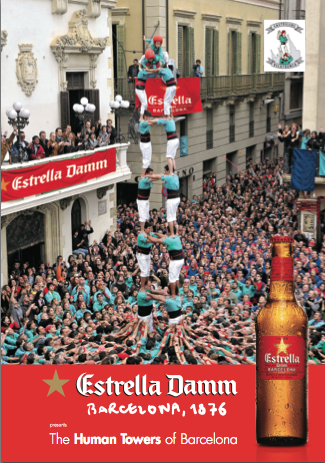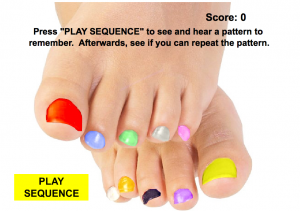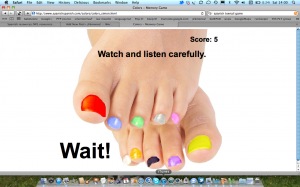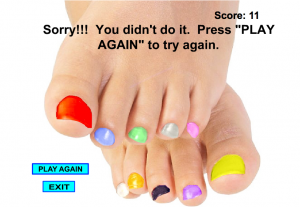*This is one of a series of posts about some of my favourite story books for Primary Language Learning*
Moving to Switzerland added German books to my book case where previously there had only been French and Spanish. Not very many as books are exorbitantly priced (I mostly borrowed them from the library) but some.
I love books. I am indeed a bookaholic and whilst I am very fond of my technology (and this series will feature ebooks), I’m not sure I’ll ever stop preferring the smell and feel of a ‘proper’ book to swiping an electronic device. So I had to purchase this book –
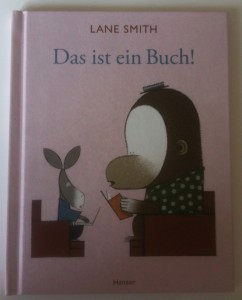 Esel (Donkey) asks Was hast du denn da?
Esel (Donkey) asks Was hast du denn da?
Affe (Monkey) replies Das ist ein Buch.
Esel has obviously not seen a book before and wonders if it texts, needs wifi or Tweets; Affe patiently replies Nein, das ist ein Buch until he decides that it would be best to let Esel read the book …
I love Das ist ein Buch because I’m Monkey when most people think that I’d be Donkey. I also like the ‘there’s more to life than swiping and tweeting and making noise’ message.
I think this would be a great story to share with a class, certainly the “Das ist ein Buch” refrain would soon be picked up, and the language is quite easy to decipher with clues from the pictures supported by actions from the reader. And it lends itself to adaptations with the scaffold “Kannst du…+ verb?” with other things that a book might be able to do.
Below is an animated telling of the book and the whole book appears one one sheet here.
httpv://youtu.be/nYl_nyuyn5Y
My second book is Wo ist mein hut
“Mein Hut ist weg. Ich will ihn zurück” says Bär. He patiently asks the other animals if they have seen his hat but noone has until the deer asks a good question that jogs his memory!
I like this book as it is again repetitive with Bär asking each animal “Hast du meinen Hut gesehen?” and thanking them politely when they haven’t “Schon gut. Trotzdem vielen dank” so lends itself well to class reading. It could also be developed into a game where learners hide an object whilst one of the class is outside for them to discover on their return (good question practice) or in small groups with cards, with question Hast du ……… gesehen? and reply Nein, ich habe……. nicht gesehen if they don’t have the card or Ja, es ist hier if they do. You could easily substitute the verb for gestohlen (stolen) gegessen (eaten) versteckt (hidden)and so on.
So that’s two of my favourite German books – others include the Lieselotte series about a mischievous cow, and all the Pixi Bücher that you can buy very cheaply wherever you see the stand below as well as in supermarkets. I’ll post again with my favourite ebooks another time!
